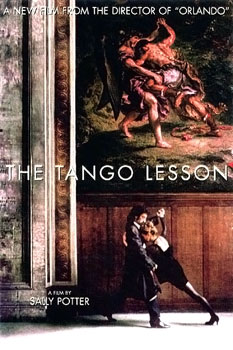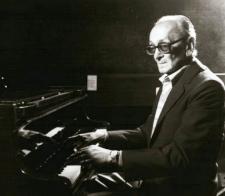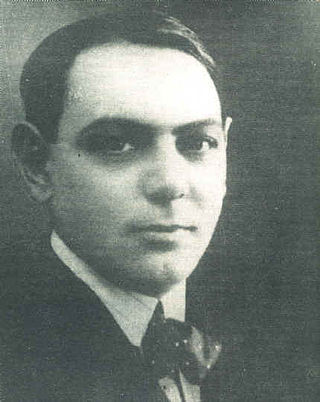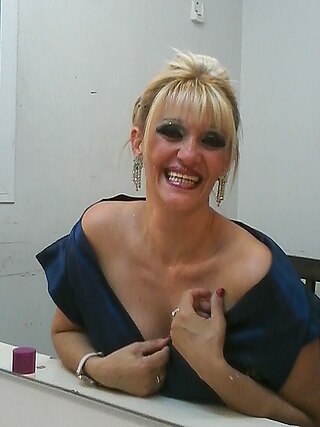
The most distinctive music of Uruguay is to be found in the tango and candombe; both genres have been recognized by UNESCO as an Intangible Cultural Heritage of Humanity. Uruguayan music includes a number of local musical forms such as murga, a form of musical theatre, and milonga, a folk guitar and song form deriving from Spanish and italian traditions and related to similar forms found in many American countries.

The Tango Lesson is a 1997 drama film written and directed by Sally Potter. It is a semi-autobiographical film starring Potter and Pablo Verón, about Argentinian Tango.

Tango is a style of music in 2
4 or 4
4 time that originated among European and African immigrant populations of Argentina and Uruguay. It is traditionally played on a solo guitar, guitar duo, or an ensemble, known as the orquesta típica, which includes at least two violins, flute, piano, double bass, and at least two bandoneóns. Sometimes guitars and a clarinet join the ensemble. Tango may be purely instrumental or may include a vocalist. Tango music and dance have become popular throughout the world.

Osvaldo Pedro Pugliese was an Argentinian tango musician. He developed dramatic arrangements that retained strong elements of the walking beat of salon tango but also heralded the development of concert-style tango music. Some of his music, mostly since the 1950s, is used for theatrical dance performances. In Buenos Aires, Pugliese is often played later in the evening when the dancers want to dance more slowly, impressionistically and intimately.

Aníbal Carmelo Troilo, also known as Pichuco, was an Argentine tango musician.

Argentine tango is a musical genre and accompanying social dance originating at the end of the 19th century in the suburbs of Buenos Aires. It typically has a 2
4 or 4
4 rhythmic time signature, and two or three parts repeating in patterns such as ABAB or ABCAC. Its lyrics are marked by nostalgia, sadness, and laments for lost love. The typical orchestra has several melodic instruments and is given a distinctive air by the bandoneon. It has continued to grow in popularity and spread internationally, adding modern elements without replacing the older ones. Among its leading figures are the singer and songwriter Carlos Gardel and composers/performers Francisco Canaro, Juan D'Arienzo, Carlos Di Sarli, Osvaldo Pugliese, and Ástor Piazzolla.

Tanghetto is an Argentinian neotango and electronic tango music project created and led by musician and producer Max Masri. Winner of the Gardel Award and four times nominated to the Latin Grammy Awards. It's based in Buenos Aires, Argentina.

Samuel Castriota was an Argentine pianist, guitarist and composer. He is the composer of the tango Mi noche triste, among other works.

Roberto Escalada born Aldo Roberto Leggero was an Argentine actor, an icon of the classic era of Argentine cinema.

Alberto De Zavalia was an Argentine film director and film producer.

Enrique Domingo Cadícamo was a prolific Argentine tango lyricist, poet and novelist. From an initial Symbolist bent, he developed a distinctive, lunfardo-rich style from an early age, and by 1925 he had his first piece, Pompas de jabón, sung by Carlos Gardel. Other notable compositions include Madame Ivonne, Che, papusa, oí, Anclado en París, Muñeca brava, Al Mundo le falta un Tornillo, Pa' que bailen los muchachos and Los mareados, originally titled Los dopados, about a couple that vows to get drunk after realizing their love is over.
La yumba (zhoóm-ba) is a tango created by Osvaldo Pugliese in 1946.
Enrique Mario Francini was an Argentine tango orchestra director, composer and violinist who played in various tango ensembles including the Orquesta Francini-Pontier and Ástor Piazzolla's Octeto Buenos Aires.

Néstor Fabián, is an Argentine tango singer and actor. Having lost his biological family, he was adopted. At the age of twelve, he started working at a shoes factory to help his adoptive family.
Carmen Micaela Risso de Cancellieri, better known as Carmencita Calderón, was an Argentine tango dancer.

Incidental Tango is Argentine electrotango band Tanghetto's fifth studio album. The album was released in December 2012.

Vicente Greco was an Argentine composer, conductor, and bandoneon player of tango music. He had a significant role in the spread of tango music from the suburbs into the cities, where it became very popular.

The 19th Annual Premios Gardel ceremony were held on June 6, 2017. The TN network broadcast the show live from the Gran Rex Theatre in Buenos Aires. The ceremony recognizes the best recordings, compositions, and artists of the eligibility year, which runs from January 1, 2016 to January 31, 2016.

Lorena Ermocida is an Argentine tango dancer, teacher and choreographer.

Silvia Gabriela Garro, known as Silvia Gabriela is an Argentine tango singer based in Australia. She has received several awards throughout her career, most notably the Golden Condor at the International Tango Festival (2008).
















